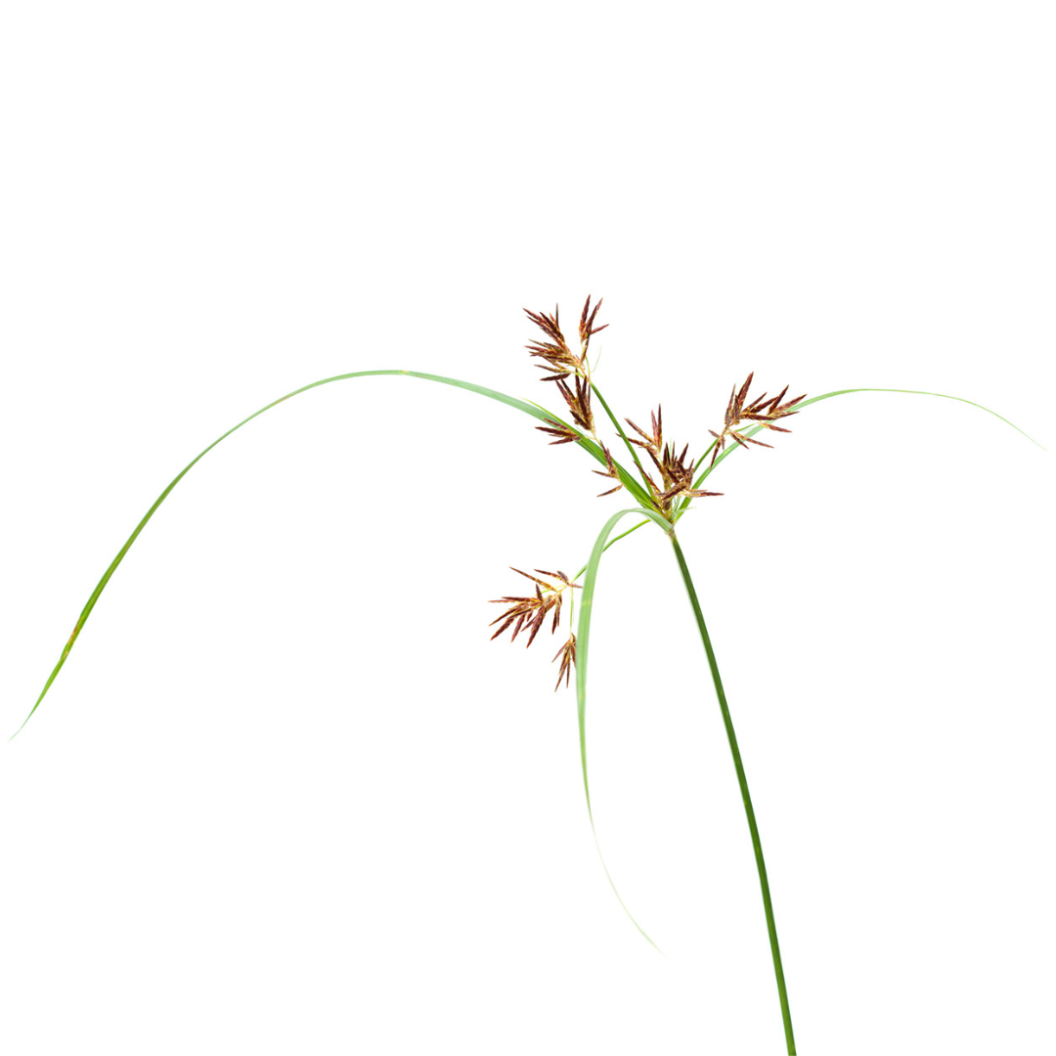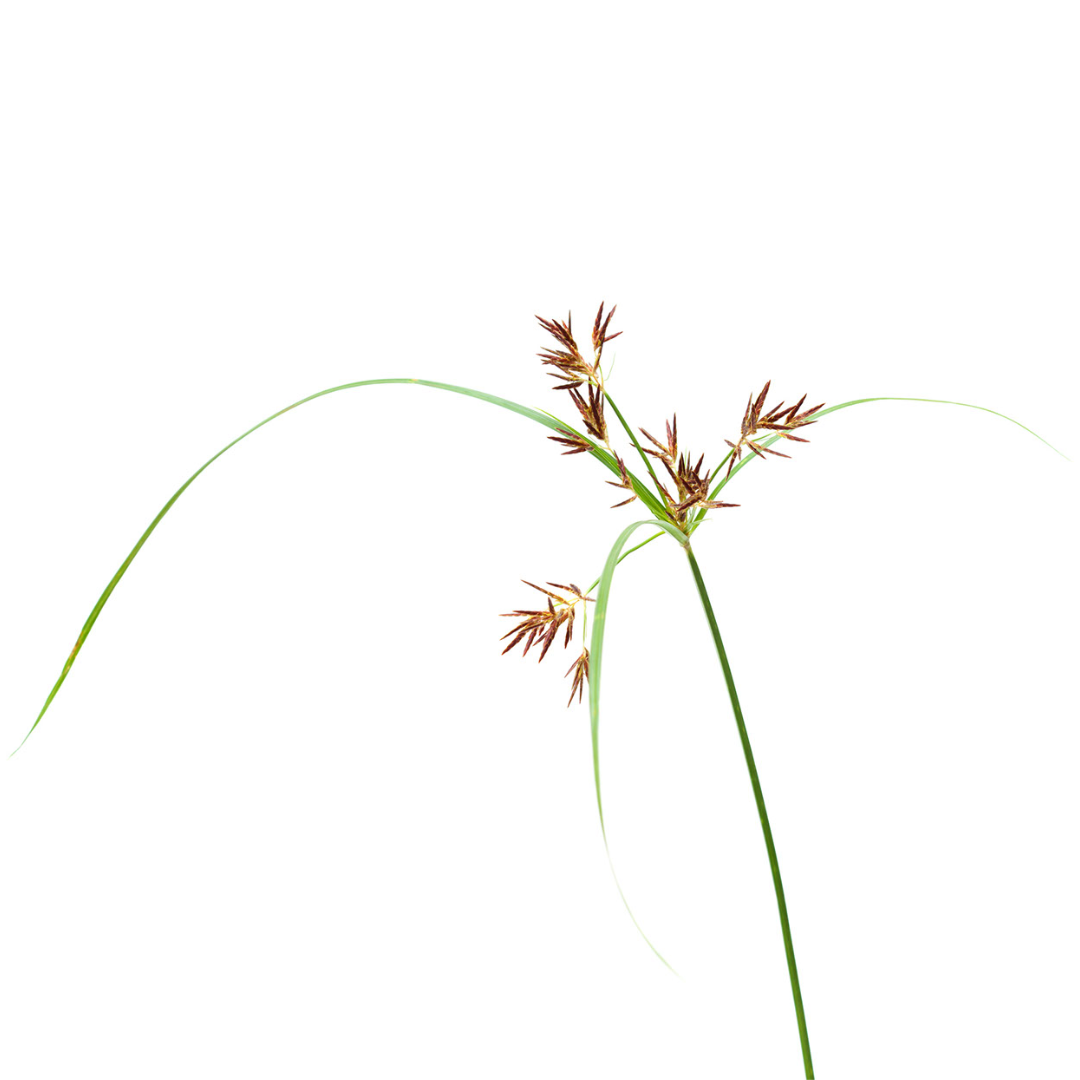
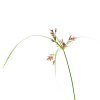
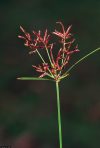

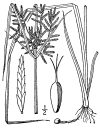
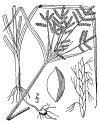
Nutsedge
DESCRIPTION: The plant commonly called nutsedge is actually two different species of weeds in the genus Cyperus. The most commonly encountered species are the yellow nutsedge and the purple nutsedge. Both are considered invasive and difficult to control, as they have a complex system of underground tubers that allow them to survive and spread even in adverse conditions. Nutsedge is a common problem in lawns, gardens, and agricultural fields, where it can outcompete desierable plants for water and nutrients.
SCIENTIFIC NAME: Cyperus esculentus (yellow) Cyperus rotundus (purple)
OTHER NAMES: Nut Grass, Water Grass, Earth Almond, Tiger Nut, Yellow Nutgrass, Purple Nutgrass
LEAF TYPE: Sedge
FLOWERS: The flowers of the nutsedge are small and inconspicuous, and they grow in clusters at the end of tall, slender stems that rise above the leaves. The flowers are typically yellow or brownish-red in color and have a spike-like shape that gives them a distinctive appearance. From a distance, the flowers may look like tiny, fuzzy balls or brushes at the top of the stems. They are not particularly showy or attrative.
LEAVES: The leaves are long, narrow, and grass-like in appearance. They grow in clumps from the base of the plant and are usually a light green or yellowish color. The leaves are smooth and glossy, with a shiny texture that can make them stand out from surrounding grasses. Unlike some grasses, nutsedge leaves have a triangular cross-section and are arranged in groups of three, giving them their distinctive look. The leaves may also have a slightly curled or wavy appearance, which can make them appear more delicate than other types of grass-like plants.
LIFE CYCLE: Perennial
HOW TO IDENTIFY: The easiest way to visually identify nutsedge is to look at the stem, which is triangular and solid, not hollow like most grasses. Although the plant looks like a type of grass, it is not. It will have flowers that look like small, fuzzy balls or brushes, and they are usually yellow or brownish-red in color. Additionaly, nutsedge often grows in wet or moist areas, such as along the edges of ponds or in low-lying areas of lawns or gardens. If you're unsure whether a plant is nutsedge, try pulling up a leaf or stem and looking for the triangular shape. Once you've identified nutsedge once, it becomes relatively easy to to distinguish it from grass or other types of weeds.
MECHANICAL CONTROL RECOMMENDATIONS:
1. Hand pulling - More Info
2. Tilling - More Info
3. Mowing - More Info
4. Mulching - More Info
5. Solarization - More Info
6. Flame Weeding- More Info
7. Repeated Cutting - More Info
8. Barrier Installation - More Info
9. Mechanical Removal Tools - More Info
CHEMISTRY RECOMMENDATIONS:
"Pre-emergent herbicides:
Sulfentrazone: This herbicide can provide effective pre-emergent control of nutsedge. It's often found in combination products with other active ingredients.
Halosulfuron-methyl: This herbicide is specifically labeled for control of nutsedge and can be used as a pre-emergent treatment.
Imazethapyr: While primarily known as a post-emergent herbicide, certain formulations of imazethapyr can also have pre-emergent activity against nutsedge.
Oxadiazon: Oxadiazon is a pre-emergent herbicide that can help control nutsedge. It's available in various formulations and can be used in both turf and ornamental settings.
Pendimethalin: Pendimethalin is a widely used pre-emergent herbicide that can offer some control of nutsedge along with other broadleaf and grassy weeds.
Prodiamine: Prodiamine is commonly used to prevent the emergence of a wide range of weeds, including nutsedge. It's available in various formulations and can be applied in different settings.
Dithiopyr: Dithiopyr is effective against a variety of weeds, including some nutsedge species. It's often used in both pre-emergent and early post-emergent applications.
Isoxaben: Isoxaben is mainly known for controlling broadleaf weeds but can also provide some pre-emergent control of nutsedge.
Post-emergent herbicides:
Sulfosulfuron: Sulfosulfuron is an effective post-emergent herbicide for nutsedge control. It's often used in turfgrass settings.
Halosulfuron-methyl: This herbicide is labeled for both pre-emergent and post-emergent control of nutsedge. It can be effective in controlling established nutsedge plants.
Imazosulfuron: Imazosulfuron is a selective post-emergent herbicide that targets nutsedge species. It's often used in rice and other agricultural crops.
Imazethapyr: While primarily known as a pre-emergent herbicide, certain formulations of imazethapyr can also have post-emergent activity against nutsedge.
Sethoxydim: While primarily used for grassy weed control, sethoxydim can also provide some control of nutsedge species.
Fluazifop-P-butyl: Like sethoxydim, fluazifop-P-butyl is mainly used for grassy weed control but may also have some effect on nutsedge.
Glyphosate: Glyphosate is a non-selective herbicide that can effectively control a wide range of weeds, including nutsedge. However, it will also damage or kill desirable plants, so it should be used with caution in areas with other vegetation.
Quinclorac: Quinclorac is a broadleaf and grassy weed herbicide that can provide some control of nutsedge species.
Selective herbicides:
Halosulfuron-methyl: This herbicide is effective against nutsedge species while being relatively safe for many turfgrass and ornamental plants.
Sulfentrazone: Sulfentrazone is another selective herbicide that targets nutsedge without harming many desirable grasses and broadleaf plants.
Imazosulfuron: This herbicide is known for its selectivity in targeting nutsedge species. It's often used in rice and other agricultural crops.
Quinclorac: Quinclorac is a broadleaf and grassy weed herbicide that can provide some control of nutsedge while sparing many desirable grass species.
Fluazifop-P-butyl: While mainly used for grassy weed control, fluazifop-P-butyl might offer some selectivity in targeting nutsedge species.
Bentazon: Bentazon is a broadleaf herbicide that can control certain broadleaf weeds, including some nutsedge species, while being less harmful to grasses.
Ethoxysulfuron: This herbicide targets sedges, including nutsedge species, while being selective for use in certain crops.
Thiencarbazone-methyl: Thiencarbazone-methyl is a herbicide used for post-emergent control of nutsedge species in various turfgrass settings.
Non-Selective herbicides:
Glyphosate: Glyphosate is a widely used non-selective herbicide that can effectively control a broad spectrum of weeds, including nutsedge species. However, it will also damage or kill any plants it comes into contact with, so it should be used carefully in areas where you want to spare other vegetation.
Glufosinate-ammonium: This non-selective herbicide is another option for controlling a range of weeds, but like glyphosate, it can harm non-target plants.
Diquat: Diquat is a fast-acting non-selective herbicide that can desiccate and kill plants upon contact. It's often used in aquatic settings and can be useful for spot treatments.
Paraquat: Paraquat is a highly effective non-selective herbicide that can provide quick and complete desiccation of plants it contacts. It's often used for non-selective weed control in industrial and agricultural settings.
Recommended Prevention
Recommended Control

